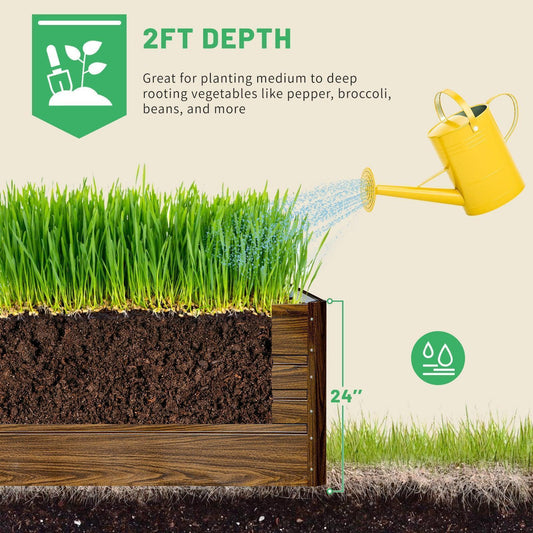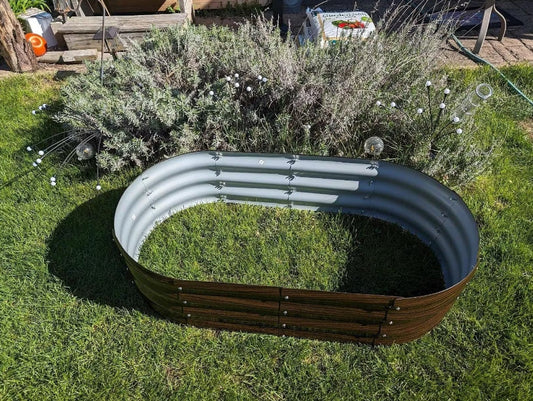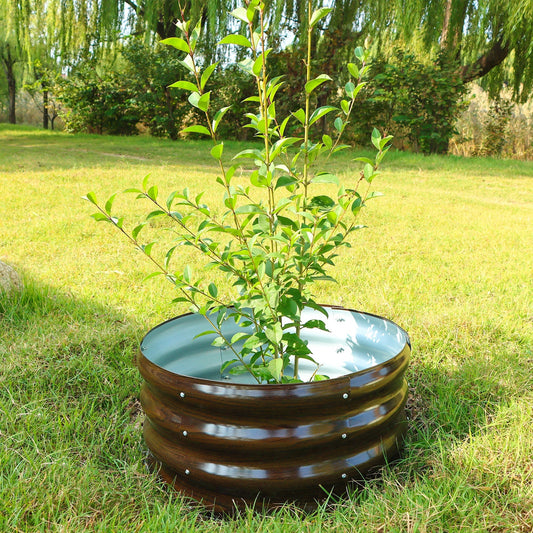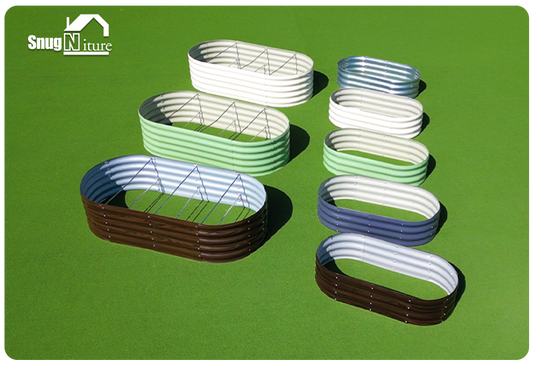The Ultimate Guide to the Benefits of Raised Garden Beds in 2025
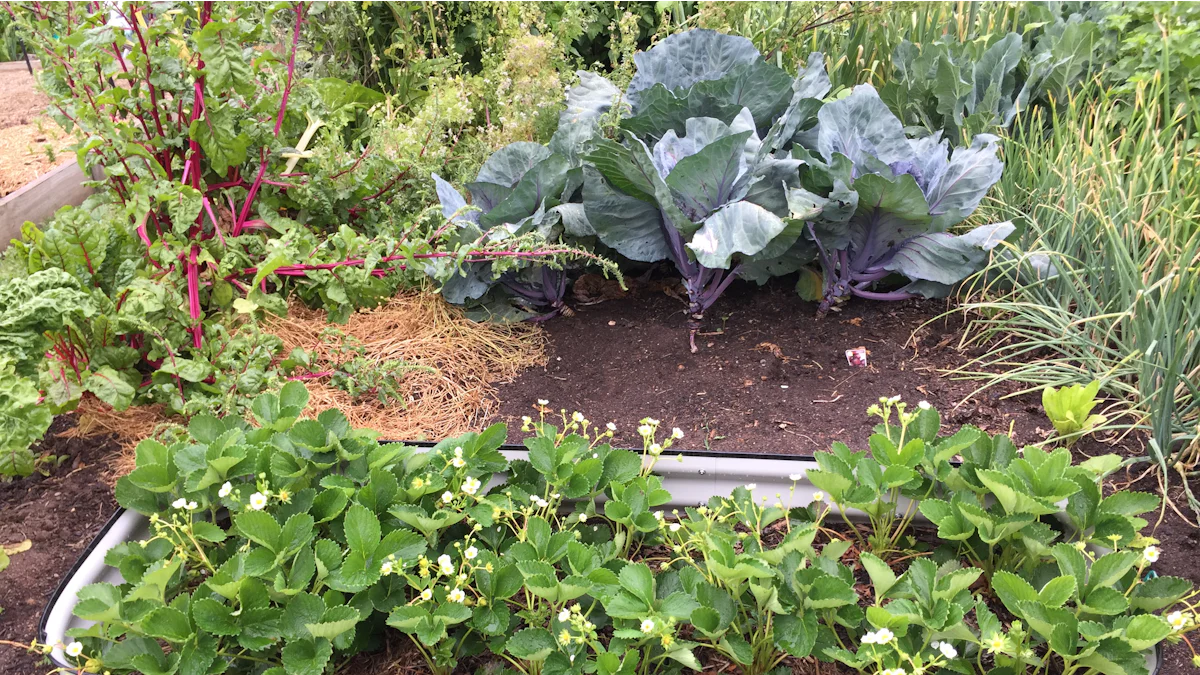
Raised garden beds are taking the gardening world by storm in 2025, showcasing the numerous benefits of a raised garden bed. You can now grow more food in less space, even in urban areas. These beds let you control soil quality, manage pests, and enjoy gardening without constant weeding. They’re not just practical—they’re transforming how you connect with nature.
Key Takeaways
Raised garden beds help soil stay healthy and drain better. This helps plants grow well and keeps roots from getting too wet.
They make gardening simpler by being easier on your back and knees. You can enjoy gardening without feeling sore.
Raised beds save water, using 73% less while growing up to 30% more crops in some areas.
Understanding Raised Bed Gardening
What Is a Raised Bed?
A raised bed is a gardening structure where soil is elevated above the ground, typically enclosed by a frame made of wood, metal, or other materials. Think of it as a mini garden box that gives you complete control over your growing space. These beds can vary in size and height, making them adaptable to your needs. Whether you're growing vegetables, herbs, or flowers, a raised bed creates a defined area for your plants to thrive.
The beauty of a raised bed lies in its simplicity. You can fill it with nutrient-rich soil tailored to your plants, ensuring they get the best start. Plus, the elevated design improves drainage, so your plants won't suffer from waterlogged roots. It’s like giving your garden a VIP treatment!
How Raised Beds Differ from Traditional Gardening
Raised beds offer several advantages over traditional in-ground gardening. Here’s why they stand out:
They make gardening easier on your back and knees since you don’t have to bend as much.
Their elevated structure helps with crop rotation, reducing the risk of soil-borne diseases and pests.
Raised beds are more efficient with water use and allow you to start planting earlier in the season.
They’re perfect for plants with delicate roots that need specific soil conditions.
You’ll notice better production thanks to improved root depth, soil quality, and drainage.
Raised beds are customizable and can add a touch of beauty to your garden.
With a raised bed, you also get a more organized and manageable gardening space. It’s easier to tend to your plants, and you’ll need fewer tools to get the job done. Whether you’re a beginner or a seasoned gardener, raised beds make the whole process more enjoyable and productive.
The Benefits of a Raised Garden Bed
Improved Soil Quality and Drainage
One of the biggest benefits of a raised garden bed is the control it gives you over soil quality. You can fill your bed with nutrient-rich soil that’s perfect for growing healthy plants. This means your vegetables, flowers, or herbs get the best possible start. Plus, the elevated design improves drainage. Water doesn’t pool around your plants, so their roots stay healthy and strong. If you’ve struggled with soggy soil in traditional gardening, a raised bed is a game-changer.
Better Pest and Weed Control
Tired of battling weeds and pests? Raised beds make it easier to keep them at bay.
The defined borders of a raised bed help you maintain weed-free soil, saving you time and effort.
You can easily cover your crops to protect them from animals.
The elevated structure creates a natural barrier against pests, making pest control more manageable with row covers.
With a raised bed, you’ll spend less time fighting weeds and more time enjoying your garden.
Enhanced Water Management
Raised beds are also great for conserving water. Studies show that raised-bed planting improves water use efficiency by 73%. In some regions, like Egypt and Sudan, crop yields increased by up to 30% thanks to better water management. The design of a raised bed ensures water goes directly to your plants’ roots, reducing waste. You’ll save water and grow healthier plants at the same time.
Accessibility and Physical Comfort
Gardening should be enjoyable, not a strain on your body. Raised beds make it easier to tend to your plants without bending or kneeling.
Raised beds offer gardeners with physical limitations the opportunity to have aesthetically pleasing, easily accessible, highly productive garden plots.
You can even customize your raised bed with built-in seating for added comfort. Whether you’re planting or harvesting, you’ll find the experience much more comfortable.
Aesthetic Appeal and Garden Organization
A raised garden bed doesn’t just improve functionality—it also enhances the look of your garden. Artistically designed beds keep unruly plants contained, giving your garden a tidy appearance. You can arrange multiple beds with paths and arbors to create a stunning focal point. By selecting plants with different colors, textures, and heights, you can add depth and interest to your garden layout. A raised bed transforms your space into a beautiful and organized oasis.
Types of Raised Beds for Gardening
Wooden Raised Beds
Wooden raised beds are a classic choice for gardeners. They’re versatile, easy to build, and blend beautifully with natural surroundings. You can fill them with nutrient-rich soil, which is perfect for growing healthy plants. Plus, they prevent soil compaction since you work from the sides instead of stepping into the bed.
However, wooden raised beds come with a few challenges. The initial cost of soil can be high, and you may need to water and amend the soil more frequently. If you choose rot-resistant wood, like cedar or redwood, the upfront expense might be higher, but it’s worth it for durability. Despite these drawbacks, wooden raised beds remain a popular option for their aesthetic appeal and functionality.
Metal Raised Beds
Metal raised beds are a modern and durable option for your garden. They’re competitively priced and offer a sleek, contemporary look. Snugniture’s Modular Metal Raised Garden Beds, for example, are corrosion-resistant and built to last for years. These beds promote better drainage and soil aeration, giving your plants the best chance to thrive.
While metal beds are sturdy, they can dent or bend over time. Regular maintenance, like preventing rust, helps extend their lifespan. If you’re looking for a long-term solution, metal raised beds are a fantastic investment for both style and practicality.
Plastic and Composite Raised Beds
Plastic and composite raised beds are lightweight and easy to assemble. They’re resistant to rot and pests, making them a low-maintenance choice. Composite materials, often made from recycled plastics and wood fibers, combine durability with eco-friendliness. These beds are perfect if you want a hassle-free gardening experience.
One downside is that plastic beds might not have the same natural look as wood or metal. However, their durability and ease of use make them a great option for beginners or those with limited time for garden upkeep.
DIY Raised Bed Options
If you’re on a budget or love a creative project, DIY raised beds are the way to go. You can build a wooden raised bed for about $56, which is much cheaper than buying a pre-made one. Cinder blocks or concrete blocks are another affordable option. You can even fill the holes with flowers to deter pests.
For a unique touch, repurpose old furniture like cabinets or use wooden pallets for shallow-rooted plants. Plant grow bags are another flexible and reusable choice. DIY raised beds let you customize your garden while saving money and recycling materials.
Choosing the Right Raised Bed
Factors to Consider (Size, Material, Budget)
Choosing the perfect raised bed for your garden starts with understanding your needs. Here are some key factors to keep in mind:
Size: Think about the space you have and what you want to grow. A smaller bed works well for herbs, while larger ones are better for vegetables or flowers.
Material: Durability matters. Wood offers a natural look but may need more maintenance. Metal, like Snugniture’s Modular Metal Raised Garden Beds, lasts longer and resists corrosion. Plastic and composite beds are lightweight and low-maintenance.
Budget: Raised beds come in all price ranges. DIY options save money, but pre-made beds, like modular metal ones, offer convenience and longevity.
Aesthetics: Your garden should look as good as it functions. Choose a material and design that complements your outdoor space.
Sustainability: Eco-friendly materials, like those used in Snugniture’s beds, help you garden responsibly.
By considering these factors, you’ll find a raised bed that fits your gardening style and goals.
Matching Raised Beds to Your Gardening Goals
Your gardening goals play a big role in selecting the right raised bed. Are you growing vegetables for your family? A larger bed, like an 8x4 ft option, gives you plenty of room. Want a small herb garden? A compact 2x2 ft bed works perfectly.
If accessibility is important, go for taller beds, like Snugniture’s 24" tall models. They’re easier on your back and knees. For decorative gardens, wooden or metal beds add charm and structure.
Raised bed gardening is all about customization. Whether you’re aiming for high yields, a beautiful landscape, or an easy-to-maintain setup, there’s a raised bed that matches your vision. Take your time to plan, and you’ll create a garden that’s both functional and inspiring.
Setting Up a Raised Garden Bed

Selecting the Best Location
Choosing the right spot for your raised bed is the first step to a thriving garden. A good location ensures your plants get the sunlight, water, and care they need. Here are a few things to keep in mind:
Sunlight: Pick a spot that gets at least six hours of direct sunlight daily. Most vegetables and flowers love the sun.
Water Proximity: Place your raised bed near a water source. This makes watering easier and saves you time.
Convenience: Keep your garden close to your kitchen or where you spend most of your time. You’ll find it easier to harvest fresh herbs or veggies when they’re just a few steps away.
Aesthetics: Think about how the raised bed fits into your yard. A well-placed garden can enhance your outdoor space.
By selecting the right location, you set the stage for a productive and beautiful garden.
Preparing the Base and Soil
The base of your raised bed is just as important as the soil you use. A well-prepared base ensures proper drainage and prevents weeds from creeping in. Follow these tips to get started:
Use organic materials like straw, shredded leaves, or logs to fill the bottom of the bed. These materials break down over time and enrich the soil.
Wet each layer as you fill the bed. This helps the soil settle and prevents sinking later.
Avoid using fillers like plastic bottles. Stick to natural, nutrient-rich materials.
Level the soil with a rake once the bed is filled. This creates an even surface for planting.
A solid base gives your raised bed the foundation it needs for healthy plant growth.
Filling with Nutrient-Rich Soil
The soil in your raised bed is the lifeline of your plants. Using the right mix ensures they get the nutrients they need to thrive. Here’s how to create the perfect blend:
Start with sterilized compost to keep weeds and pests out. Compost should make up about two-thirds of the soil.
Add topsoil or a garden mix to fill the rest of the bed. This provides structure and supports root growth.
Mix in amendments like perlite, peat moss, or aged manure. These improve aeration, moisture retention, and texture.
For a balanced recipe, try combining 50% topsoil, 30% compost, and 20% organic matter like worm castings or aged leaves.
With nutrient-rich soil, your raised bed becomes the perfect environment for plants to flourish.
Planting and Maintaining a Raised Bed
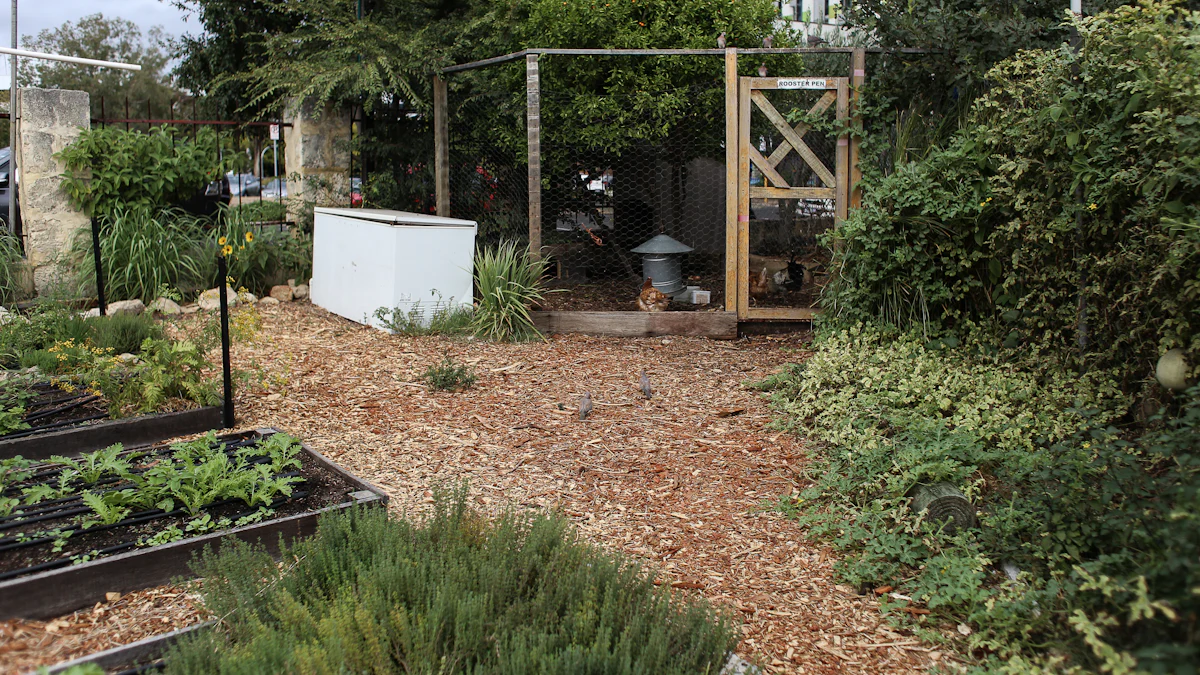
Selecting Plants for Raised Bed Gardening
Choosing the right plants for your raised bed is key to a thriving garden. Raised beds are perfect for growing a variety of plants, from leafy greens to vibrant flowers. To help you decide, here’s a handy table with some great options for different climates:
Plant Name |
Botanical Name |
Sun Requirements |
Height |
Hardiness Zones |
|---|---|---|---|---|
Malabar Spinach |
Basella alba |
Full sun |
2-3 feet |
10-11 |
Summer Snapdragon |
Angelonia angustifolia |
Full sun |
12-18 inches |
9-11 |
Swiss Chard |
Beta vulgaris |
Full sun to partial shade |
1-2 feet |
2-11 |
Globe Amaranth |
Gomphrena globosa |
Full sun to partial shade |
1-2 feet |
2-11 |
Tomatillo |
Physalis philadelphica |
Full sun |
3-4 feet |
5-11 |
Eggplant |
Solanum melongena |
Full sun |
2-4 feet |
9-12 |
Tomatoes |
Solanum lycopersicum |
Full sun |
1-10 feet |
3-11 |
Whether you’re growing vegetables, herbs, or fruits, this table gives you a great starting point. Pick plants that match your climate and sunlight availability for the best results.
Seasonal Planting and Crop Rotation
Seasonal planting and crop rotation keep your raised bed productive year-round. Rotating crops helps prevent pests and diseases from taking hold. Here’s why it works:
It disrupts the lifecycle of pests by moving their host plants.
It reduces the risk of recurring issues like tomato blight.
It keeps your soil healthy by varying nutrient demands.
To make this easier, keep a simple record of what you plant in each bed. This way, you can plan rotations and ensure your garden stays balanced and thriving.
Long-Term Maintenance and Sustainability
Maintaining your raised bed doesn’t have to be complicated. Follow these tips to keep it sustainable:
Choose a sunny location with easy access to water.
Use high-quality soil, like sandy loam, and enrich it with compost annually.
Add a thick layer of organic compost (1-2 inches) to maintain soil health.
Try sustainable methods like Hugelkultur, which uses decomposing wood to improve soil structure.
By adopting these practices, you’ll create a garden that’s not only productive but also eco-friendly. Your raised bed will continue to flourish season after season.
Raised garden beds offer you a simple way to grow plants while reaping long-term benefits. They let you control soil quality, improve drainage, and conserve water. You’ll enjoy higher yields and healthier plants, even in small spaces. Plus, they promote healthy eating by making it easier to grow fresh, nutritious food at home.
These beds also support sustainability. They reduce the need for chemical fertilizers, manage water efficiently, and create opportunities for urban gardening. Whether you’re in a city or rural area, raised beds help you grow food locally and build stronger communities. Start your gardening journey today and contribute to a greener, healthier future!



